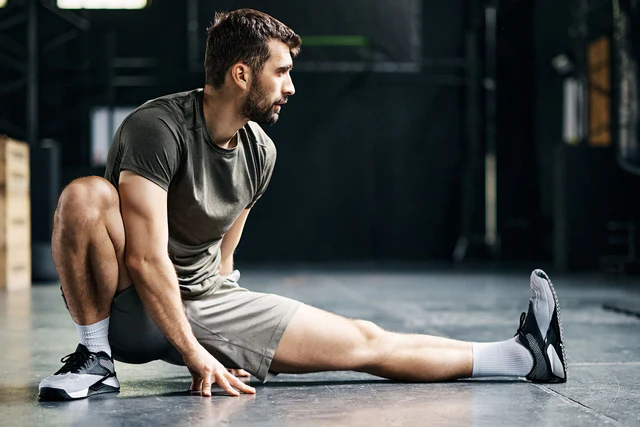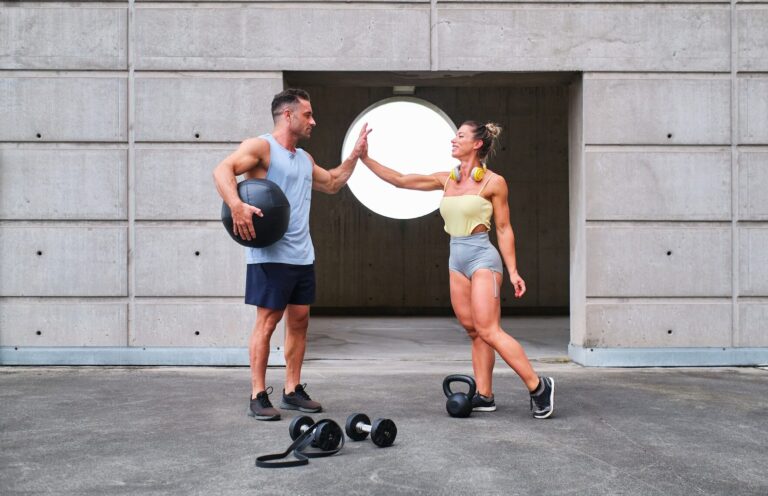Strength Training for Beginners: Benefits, Techniques, and Common Mistakes to Avoid

Strength training is one of the most effective ways to build muscle, improve metabolism, enhance bone health, and boost overall well-being. Whether you’re new to fitness or just exploring resistance training, getting started can feel overwhelming—but it doesn’t have to be.
This guide breaks down the core benefits, beginner techniques, and common pitfalls to avoid so you can start your strength journey with confidence.
💪 What is Strength Training?
Strength training—also known as resistance training—involves exercises that use resistance to improve muscular strength and endurance. This can include bodyweight movements, free weights, machines, or resistance bands.
Unlike cardio, which primarily focuses on heart and lung health, strength training targets muscles, bones, and connective tissues, making it essential for long-term health and mobility.
🌟 Top Benefits of Strength Training
1. Builds Lean Muscle Mass
Muscle helps shape your body, supports joints, and burns more calories—even at rest.
2. Boosts Metabolism
More muscle means a higher resting metabolic rate, helping with fat loss and weight control.
3. Improves Bone Density
Resistance training strengthens bones and reduces the risk of osteoporosis, especially with age.
4. Enhances Joint Health and Stability
Stronger muscles mean better joint protection and reduced injury risk.
5. Elevates Mood and Mental Health
Releases endorphins and can improve self-confidence and reduce symptoms of anxiety and depression.
🏋️♀️ Getting Started: Beginner Strength Training Techniques
If you’re new to lifting, start with simple, compound movements that work multiple muscle groups at once.
Beginner-Friendly Exercises:
- Bodyweight Squats – Strengthens legs and core
- Push-ups (modified if needed) – Targets chest, shoulders, triceps
- Glute Bridges – Builds glutes and lower back
- Dumbbell Rows – Works back and biceps
- Planks – Strengthens core stability
- Overhead Dumbbell Press – Builds shoulders and arms
Equipment Options:
- Bodyweight (no equipment needed)
- Dumbbells or resistance bands
- Machines (great for learning proper form)
- Kettlebells (add variety with dynamic moves)
Weekly Structure Example:
| Day | Focus |
|---|---|
| Monday | Full-body (bodyweight) |
| Wednesday | Upper body (dumbbells) |
| Friday | Lower body + core focus |
🎯 Tip: Begin with 2–3 sessions per week, and rest in between to allow for muscle recovery.
⏱️ Sets, Reps, and Progression for Beginners
- Reps: 8–12 per exercise (focus on form)
- Sets: 2–3 sets per exercise
- Rest: 30–60 seconds between sets
- Progression: Increase resistance or reps every 1–2 weeks
📌 Start light, focus on control, and increase gradually as your strength improves.
🚫 Common Mistakes Beginners Should Avoid
1. Skipping Warm-Ups and Cool-Downs
Warming up preps your muscles; cooling down helps prevent stiffness and injury.
✅ Do light cardio and dynamic stretches before, and static stretches after your workout.
2. Using Too Much Weight Too Soon
Starting heavy increases injury risk and reduces control.
✅ Perfect form with lighter weight first, then increase as needed.
3. Neglecting Form for More Reps
Poor form leads to injuries and limits results.
✅ Prioritize good posture, alignment, and control over speed or quantity.
4. Not Resting Enough Between Workouts
Muscles grow and repair during rest—not during the workout.
✅ Give at least 48 hours of rest between training the same muscle group.
5. Ignoring Nutrition and Hydration
Strength gains require proper fuel and recovery support.
✅ Eat balanced meals with protein, complex carbs, and healthy fats; drink plenty of water.
🧠 Mindset and Motivation Tips
- Start with clear, achievable goals (e.g., “I want to strength train 3x a week”)
- Track your progress in a journal or app
- Don’t compare yourself to others—your journey is unique
- Celebrate small wins like lifting heavier or doing more reps
🏁 Remember: Progress is progress, no matter how slow it feels.
🩺 When to Seek Guidance
Consider working with a certified personal trainer or joining beginner strength classes if:
- You’re unsure about proper form
- You’ve had past injuries
- You want a customized workout plan
- You’re motivated by structured accountability
FAQs About Beginner Strength Training
1. How often should beginners strength train?
Start with 2–3 sessions per week with at least one rest day between sessions.
2. Do I need a gym membership?
No! Bodyweight, resistance bands, or home dumbbells are enough to get started.
3. Will strength training make me bulky?
No. It builds lean muscle and burns fat. “Bulking up” requires intense, specific training and diet.
4. Can I combine strength training with cardio?
Yes! Combining both improves overall fitness and supports weight loss.
5. When will I see results?
You may feel stronger within weeks, and see physical changes in 4–8 weeks with consistency.
6. What should I eat before and after workouts?
A light snack with protein and complex carbs before; protein-rich meals after for recovery.
7. Should I feel sore after every workout?
Mild soreness is normal, but sharp pain or extreme fatigue isn’t. Always listen to your body.
8. Can strength training help with aging?
Absolutely. It improves bone density, joint health, and muscle mass—all crucial for aging well.
✅ Conclusion
Strength training is for everyone—regardless of age, size, or experience. By focusing on the fundamentals, starting slow, and avoiding common mistakes, you can build a routine that helps you feel stronger, healthier, and more confident.
Start today with just a few simple moves, stay consistent, and remember: your body gets stronger every time you show up.

